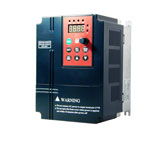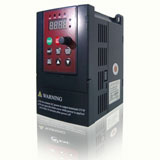DTC vs. classic PWM vector drives
ABB, Hitachi and Yaskawa stay on the cutting edge of technology. After looking over the ABB technical guide book they admit that the limiting factor is the motor. It is great to have a 25 microsecond update time but the inertia of the real world limits rate of change.
Sensorless Vector or sensorless feedback has been around awhile. The technology leaders keep coming up with better software and control algorithms to improve performance, which is great. In most applications the VFD far exceeds the motor capabilities. Once you can go from full torque at zero speed to fast enough to explode the rotor the advantages of cutting edge improvements are limited.
I have done torque control with Hitachi drives a couple of generations back on gauze winding applications that held constant tension in grams that worked great. All of the leaders can be used on hoists, catch a spinning fan, reverse a fan or provide current faster than the motor can respond to.
I think the advantage to most users is the ease of setup. What skill level technician or engineer is required to get maximum performance? What range of applications can it do well right out of the box? This is a big concern for users and OEM's. When Hitachi came out with continuous adaptive tuning to eliminate the need for a separate motor tuning procedure it made setup easier. ABB coming out with new and better controls will make setup even easier, which is great. But if you want to see a measurable physical increase in performance between any of the leaders once the drives are properly setup you will need to look very, very closely.
I can see onboard software in the future which could walk a very low skilled maintenance person through setup once they have power hooked up in 90% of applications.
Sensorless Vector or sensorless feedback has been around awhile. The technology leaders keep coming up with better software and control algorithms to improve performance, which is great. In most applications the VFD far exceeds the motor capabilities. Once you can go from full torque at zero speed to fast enough to explode the rotor the advantages of cutting edge improvements are limited.
I have done torque control with Hitachi drives a couple of generations back on gauze winding applications that held constant tension in grams that worked great. All of the leaders can be used on hoists, catch a spinning fan, reverse a fan or provide current faster than the motor can respond to.
I think the advantage to most users is the ease of setup. What skill level technician or engineer is required to get maximum performance? What range of applications can it do well right out of the box? This is a big concern for users and OEM's. When Hitachi came out with continuous adaptive tuning to eliminate the need for a separate motor tuning procedure it made setup easier. ABB coming out with new and better controls will make setup even easier, which is great. But if you want to see a measurable physical increase in performance between any of the leaders once the drives are properly setup you will need to look very, very closely.
I can see onboard software in the future which could walk a very low skilled maintenance person through setup once they have power hooked up in 90% of applications.



